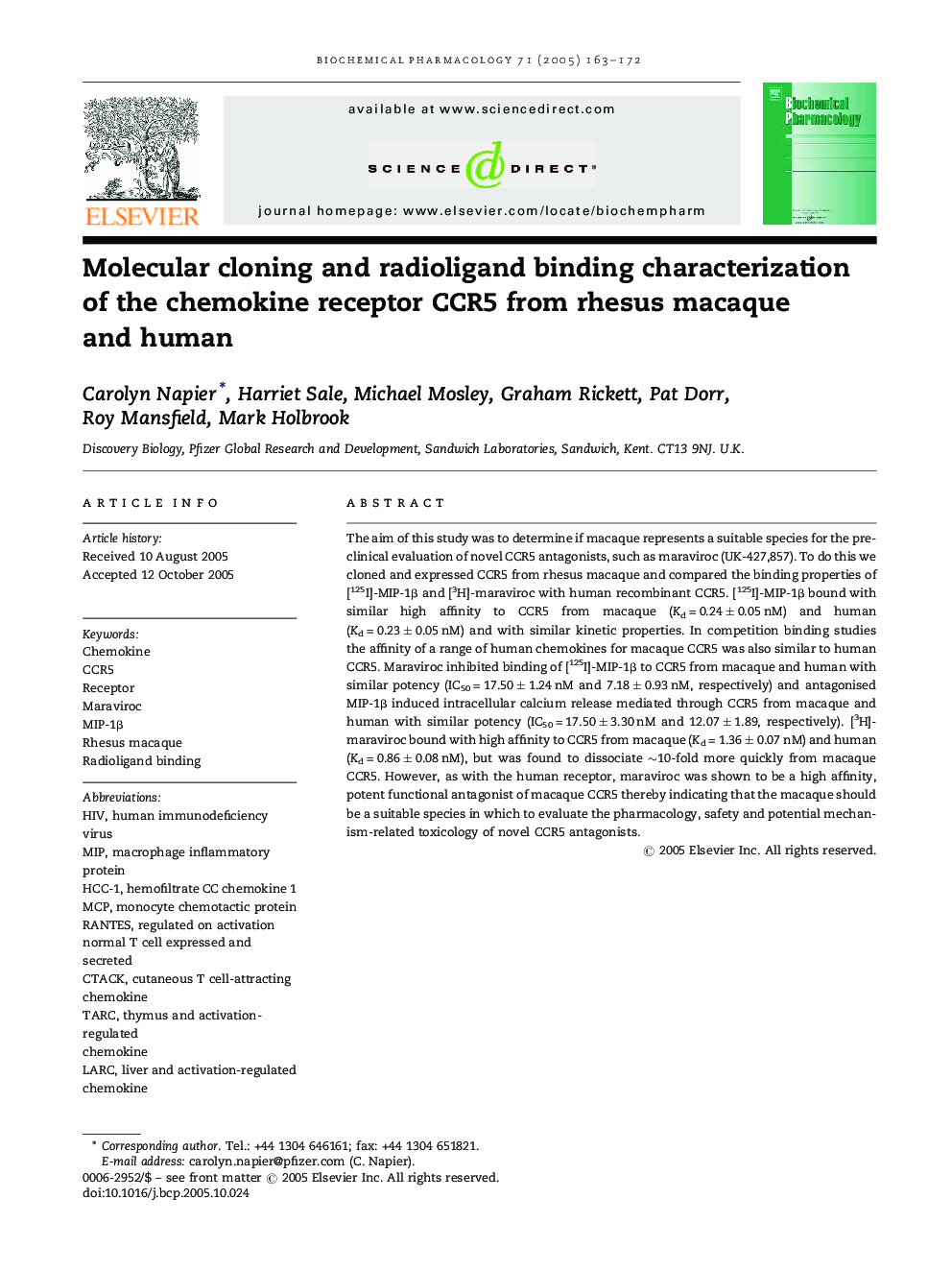| Article ID | Journal | Published Year | Pages | File Type |
|---|---|---|---|---|
| 9001448 | Biochemical Pharmacology | 2005 | 10 Pages |
Abstract
The aim of this study was to determine if macaque represents a suitable species for the pre-clinical evaluation of novel CCR5 antagonists, such as maraviroc (UK-427,857). To do this we cloned and expressed CCR5 from rhesus macaque and compared the binding properties of [125I]-MIP-1β and [3H]-maraviroc with human recombinant CCR5. [125I]-MIP-1β bound with similar high affinity to CCR5 from macaque (Kd = 0.24 ± 0.05 nM) and human (Kd = 0.23 ± 0.05 nM) and with similar kinetic properties. In competition binding studies the affinity of a range of human chemokines for macaque CCR5 was also similar to human CCR5. Maraviroc inhibited binding of [125I]-MIP-1β to CCR5 from macaque and human with similar potency (IC50 = 17.50 ± 1.24 nM and 7.18 ± 0.93 nM, respectively) and antagonised MIP-1β induced intracellular calcium release mediated through CCR5 from macaque and human with similar potency (IC50 = 17.50 ± 3.30 nM and 12.07 ± 1.89, respectively). [3H]-maraviroc bound with high affinity to CCR5 from macaque (Kd = 1.36 ± 0.07 nM) and human (Kd = 0.86 ± 0.08 nM), but was found to dissociate â¼10-fold more quickly from macaque CCR5. However, as with the human receptor, maraviroc was shown to be a high affinity, potent functional antagonist of macaque CCR5 thereby indicating that the macaque should be a suitable species in which to evaluate the pharmacology, safety and potential mechanism-related toxicology of novel CCR5 antagonists.
Keywords
Related Topics
Health Sciences
Pharmacology, Toxicology and Pharmaceutical Science
Pharmacology
Authors
Carolyn Napier, Harriet Sale, Michael Mosley, Graham Rickett, Pat Dorr, Roy Mansfield, Mark Holbrook,
